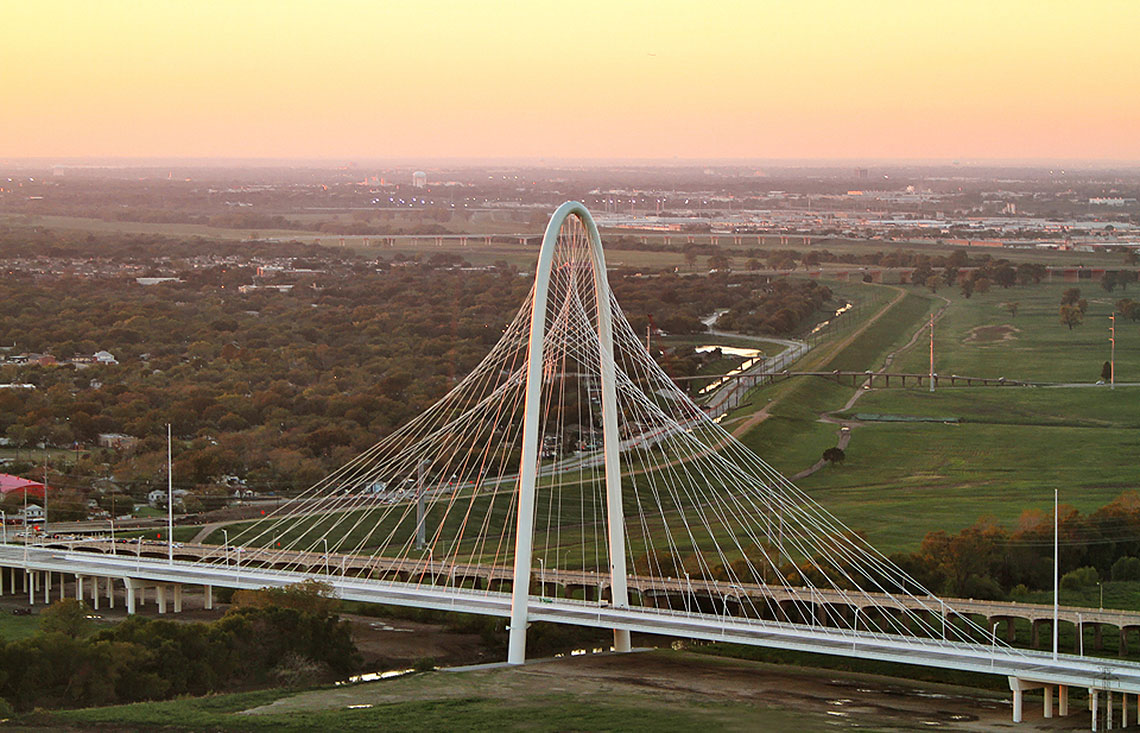For low or middle-income neighborhoods, vacancy is vulnerability; for developers, it’s opportunity. A Thursday night panel discussion hosted by the American Institute of Architecture-Dallas wasn’t necessarily about how the city should deal with the products of development, or about the decisions made to revitalize vacant spaces. It was about who decides, over and over.
The talk (“Vacancy: Who Decides and What are the Options?”) tackled the privilege inherent in discussing and addressing neighborhood vacancy in Dallas. When it comes to the city’s ongoing relationship with gentrification, there’s a lot to talk about: Last year, hundreds of West Dallas renters narrowly avoided eviction in the rapidly gentrifying area around the Margaret Hunt Hill Bridge. In May, the city adopted its first housing policy, pledging to create 20,000 units of affordable housing across Dallas.
Thursday’s panel built on an article for the AIA magazine Columns, a piece on the causes of vacant real estate and the impact of vacancy on Dallas communities, which takes it as a given that we often decide to fill empty space with “affordable housing, urban farms, and art installations, with the idea of place-making and activating space.” The article was written by Maggie Parker, the director of the Real Estate Council Community Fund and the moderator of the discussion. Parker was joined by Dallas developer Zad Roumaya, pastor Vincent Parker, and architect Lizzie MacWillie. Described on the Buzzworks website as a “serial entrepreneur,” Roumaya spearheaded development in the Cedars and is now part of private group bidding to revitalize Fair Park. MacWillie is the Associate Director at buildingcommunityWORKSHOP and head of the People Organizing Place (POP) initiative. Parker is not an urban planner. It’s his story that interested me the most.
“The Bottom” neighborhood is a 126-acre triangle of land tucked south of the Trinity River levee, between I-35 to the west and Corinth Street to the east. About seventy percent of its houses are empty. When Parker became the pastor of Golden Gate Missionary Baptist Church in The Bottom 16 years ago, a slew of non-pastoral responsibilities came along with the job.
The 80-year old church serves as a key piece of real estate in the neighborhood and has been a long-time stakeholder in its welfare. When Parker took over as pastor, city officials approached him for the church’s updated position on neighborhood development. “I did not go to seminary to be a developer,” Parker says. But for the people in his community, he’s had to become one. Parker and the Golden SEEDS Foundation are currently planning the conversion of 25 vacant houses of The Bottom’s 490 lots into affordable homes for residents. The Foundation has worked for years to create a Master Plan that lays out guidelines based on development that residents want. Any potential developers have to go through the plan, referred to by Parker as the neighborhood’s “bible.”
The plan marks a new phase in an area that has always been vulnerable. At one point, The Bottom was one of the only Oak Cliff neighborhoods African Americans were allowed to live in. The community has been historically neglected and damaged by local policy. “When my pastor came in 1952,” Parker says, “the streets were still dirt.”
During the discussion, a woman interjects. Why not demand reparations for The Bottom? She points out the disruptiveness of I-35 East, a highway built through a community. The residents wrote a Master Plan—why can’t the government fund it?
“I wish it was that simple. I really do. Neighborhoods like ours don’t get free money,” Parker says. “That’s the bottom line.”
For Parker, the issue of vacancy boils down to the power to choose. And people don’t choose to live in The Bottom. “Those who could move, moved out…Nobody wants to live in a house where there might be four people on the block.”
Born and raised in Washington, D.C., Parker knows his status as a Dallas transplant gives him insight into how the city operates. He notes the vastness of available space. The lack of expertise in urban infield development. The dearth of people of color in local government and development. “Race is a huge piece,” he says. “It pervades so much and people don’t recognize it.”
But Parker has hope for his neighborhood. “We’ve got a plan. We’ve got some neighborhood voices.” And Dallas? “There’s no reason for Dallas to be here,” Parker smiles. “They took nothing and made it something. Dallas is an example of it. It has bred arrogance but it proves it can happen.”





